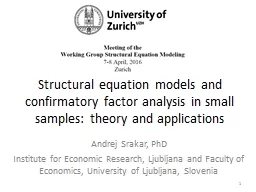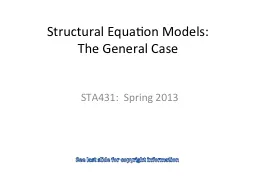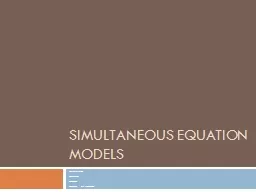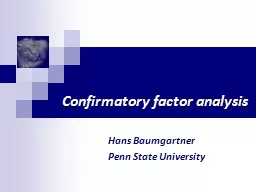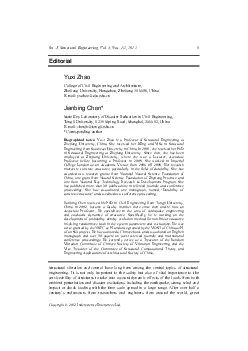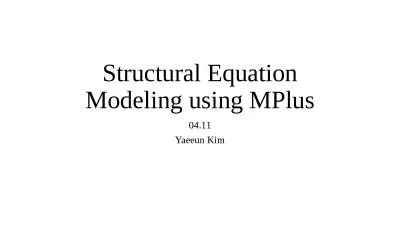PPT-Structural equation models and confirmatory factor analysis in small samples: theory and
Author : khadtale | Published Date : 2020-08-26
Andrej Srakar PhD Institute for Economic Research Ljubljana and Faculty of Economics University of Ljubljana Slovenia 1 Structure of the presentation
Presentation Embed Code
Download Presentation
Download Presentation The PPT/PDF document "Structural equation models and confirmat..." is the property of its rightful owner. Permission is granted to download and print the materials on this website for personal, non-commercial use only, and to display it on your personal computer provided you do not modify the materials and that you retain all copyright notices contained in the materials. By downloading content from our website, you accept the terms of this agreement.
Structural equation models and confirmatory factor analysis in small samples: theory and: Transcript
Download Rules Of Document
"Structural equation models and confirmatory factor analysis in small samples: theory and"The content belongs to its owner. You may download and print it for personal use, without modification, and keep all copyright notices. By downloading, you agree to these terms.
Related Documents

